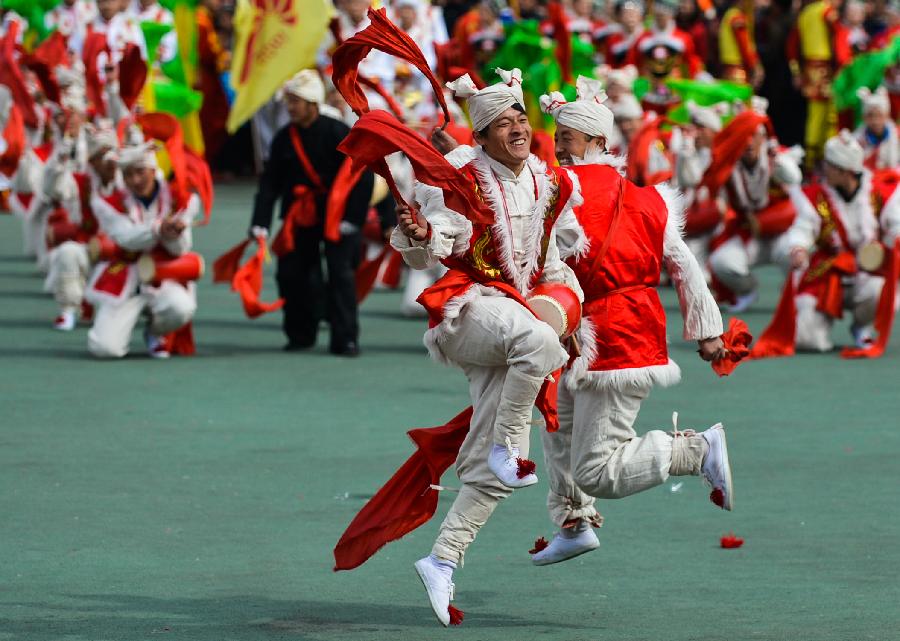(单词翻译:单击)
Yangko Dance
扭秧歌
Yangko dance is a sport to sway the body according to certain rhythms. It usually uses move in rhythm with one the movements of the waist and hip to drive the feet to step forward and half step backward to fully show the rhythmic movements of the body.
扭秧歌是一种按照一定的节拍扭动身体的运动形式,通常是通过腰臀的左扭右摆,带动脚步有节奏地移动,进一步,退半步,充分展示身体的律动。
Yangko dance has a history of 1, 000 years in China. It originated in the Southern Song dynasty and mainly performed in the Lantern Festival.It is popular in the north of China.
扭秧歌在中国已有1000多年的历史,源于南宋时期,主要在元宵节时表演,主要在中国北方地区流行。
Due to the differences of regions and customs, there exist variations in the Yangko dances, which have formed different Yangko performances.
由于地域和习俗的不同,各地秧歌也存在一些差异,从而形成不同特色的秧歌表演,
The representatives of them are the Northeast Yangko dance, Shanbei Yangko dance, Hebei Yangko dance and Shandong Yangko dance etc.
其中较具代表性的有东北秧歌、陕北秧歌、河北秧歌和山东秧歌等等。

In the history of the Chinese Yangko dance,the 1940s is an important period.
在我国秧歌活动的历史上,20世纪40年代是一个重要的时期。
Then the Chinese Communist Party founded their firm base in the north of Shanxi province and advocated Yangko dance.A lot of artists joined in the work and had produced many Yangko programs with original contents.
那时,中国共产党在陕北建立了巩固的根据地,并开始倡导新秧歌运动,许多著名的文艺工作者都参与其中,创造出了不少内容新颖的秧歌节目。
After 1949,the new Yangko was spread all over China. From then on,Yangko is performed on either in the traditional festivals or at the ceremonies.
1949年以后,新秧歌运动又普及到全国各地。从此,不管是传统节日,还是碰到各种庆祝集会活动,就会有扭秧歌表演。
Besides, Yangko dance as a folk art has stepped into the professional art palace.Not only is it accepted at home but abroad.
此外,扭秧歌还从一种民间艺术形式步入了专业艺术的殿堂,不仅在国内,而且在国际舞台上演出,深受人们的欢迎。


